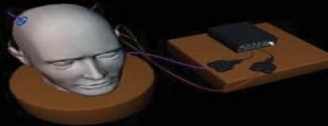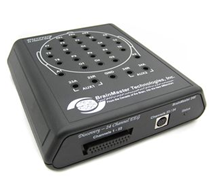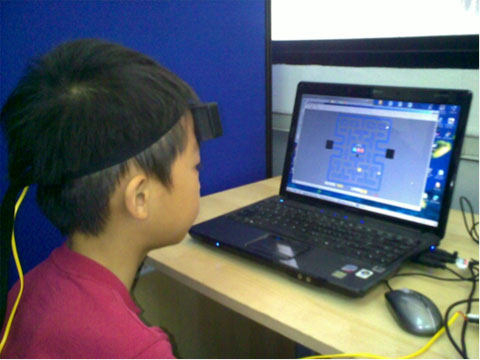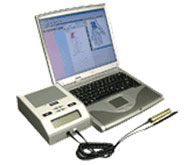Introduction to Neuro Feedback
The usage of Neurofeedback to treat a host of learning disabilities, as well as chronic problems, in Singapore is relatively new.
Neurofeedback was started in the US way back in the 60s and 70s under terms such as biofeedback or brain waves control. According to Jim Robbins, an investigative reporter and author of A Symphony In The Brain, he found that “the technique had been spawned by solid laboratory research on epilepsy…” Yet as he studied this highly effective treatment method, he was also wondering why he had not heard of it or that more people were talking about it.
So as Jim Robbins said he “decided to tell the story of brain wave biofeedback” because now to him “the big question about neurofeedback is no longer whether it works. The questions are why it is as effective as it is, for whom, precisely, and how it can be made more powerful.”
For us at BEC, after treating more than 500 children suffering from autism, and seeing their improvements for themselves and for their family, it has become our mission to get more people informed, more people treated and more people to understand the marvels, and limits of this great instrument.
What is Neurofeedback?
Neurofeedback is a process in which we train the brain to help improve its ability to regulate all bodily functions and to take care of itself. Just as biofeedback machines supply doctors and health professionals with feedback from the body, neurofeedback provides the neurotherapist with feedback from the brain in the form of various brainwave patterns as they are distributed throughout the brain. Examples of these brainwaves are the delta, theta, alpha, beta, and gamma waves.
Neurofeedback is direct exercise of the brain. As the brain continues to get rewarded through visual and/or auditory feedback, neural networks on the area where the electrodes are located are being activated. With repeated neurofeedback sessions, these newly formed neural networks become more permanent and the dysfunctional symptoms of the client undertaking the training are steadily being reduced. Since the brain is the command and control centre of the whole body, good self-regulation enhances mental performance, emotional control and physiological stability.
How Does Neurofeedback Work?

Electrodes or sensors are placed on the scalp. The electrodes pick up the brainwave activity of the client and relay this to the special amplifier (Atlantis 4×4) and the readout is displayed on the computer screen. The therapist sets certain training criteria in the computer software and if the brain fulfils these criteria, then the brain gets rewarded in the form of auditory and/or visual cues (sound and images).
There is no electrical input to the brain at all so neurofeedback is a totally non-invasive procedure. Once the brain gets its reward through auditory and/or visual feedback), there is a great tendency for the brain to move towards self-regulation thus resulting in optimal functioning. Neurofeedback utilizes highly specialized equipment to re-train the brain. The process normalizes brain wave patterns thus enhancing performance and correcting cognitive deficits.
What Conditions Can It Help?
- Anxiety-depression spectrum
- Attention deficit
- Autism
- Brain injury and strokes
- Depression
- Delayed speech
- Dementia
- Distractibility
- Dyslexia
- Headaches
- Hyperactivity
- Impulsivity
- Lack of focus and concentration
- Learning Disabilities
- Mathematical Disabilities
- Obsessive Compulsive Disorders
- Parkinson
- Reading difficulties
- Sleep Disorder
- Tinnitus
It can also be used:
- to improve auditory and visual processing
- to enhance language comprehension
- as a memory booster
- to achieve peak performance
- to reduce stress
Equipment
Our clinic utilizes the latest technology from Brainmaster Technologies. The newly acquired equipment is the Discovery 24-channel EEG and DC amplifier. This machine is the latest evolution of the technology used in the 2E and 2EA (Atlantis) series of EEG biofeedback devices.

24 Channel Discovery Amplifier
What is the Most Important Thing About Live Z Score Training?
The most important thing about live Z score training is that it is scientific. It is based upon published research and a well-documented normative database. It uses concepts that have been proven in clinical research to lead to beneficial outcomes. It eliminates guesswork, and reduces the risk or over- or under-training key parameters including coherence, phase, and asymmetry. Z score training with 4 channels can address the whole head, and normalize activation, relaxation, concentration, focus,connectivity, control, and communication. Z score training can provide a complex task that addresses whole brain function in a single protocol.
HEG Device to Promote Blood Flow
We also have the HEG (hemo-encephalo-graphy) device to measure brain function by measuring the blood flow in the brain. It is a new form of brain training that is showing great promise. Brain blood flow is voluntary and can be trained using neurofeedback procedures. Active areas of the brain are marked by high oxygen density and higher than normal temperature.

HEG Device: Promotion of blood flow to the brain
The blood carries the fuel for the brain: oxygen and glucose. When an area of the brain is more active, it has increased blood supply as the capillaries in the area are dilated. With continued use, more capillaries and more synaptic connections between neurons are built in that area. When we increase blood flow, that area of the brain is able to do its job better and with greater efficiency. HEC training is very effective in the treatment of brain injury, autism, epilepsy, stroke, depression, schizophrenia, and ADD/ADHD.
Alpha/theta Training
Alpha/theta training involves placing electrodes on the parietal lobe. With eyes closed, the client listens to a reward in the form of sound for the alpha and theta frequencies. These frequencies are best known for their relaxation and creative qualities.
Studies have indicated that the alpha/theta training results in significant increases in abstract-thinking, physiological stability, conscientiousness, boldness, imaginativeness, and self-control. It is common to use this protocol for addiction disorders, anxiety, meditation enhancement, peak performance training and stress reduction.
The alpha/theta protocol takes the client to a very specific frequency range — 4 to 12 hertz – through which emotionally painful events are easily accessed and resolved.
Who are The People Who Have Benefited from Neurofeedback?
- NASA astronauts
- Superbowl football players
- PGA Golfers
- Olympic athletes
- Fortune 500 CEOs
- Professional soccer teams
- People with cognitive deficits
- Students who want to improve academic performance
What the Medical and Scientific Community Say About Neurofeedback?
“We are convinced that Neurofeedback is the most promising alternative therapy regimen in existence today.” Joseph Kandel, MD and David Sudderth, MD
“The unparalleled abilities of the human mind arise not from neurons but from the coherence of brain waves.” Scientific American Mind – (June/July Issue, 2006)
“When using Neurofeedback procedures with epileptic seizures, 82% of patients demonstrated seizure reductions.” Dr Barry Sterman, Department of Neurobiology and Behavioral Psychiatry, School of Medicine, UCLA Medical Center
“Loss of memory, inability to recall, and confusion, are classic signs of problems with slow brainwaves. The Neurofeedback “Brain Brightening” process of reducing slow waves enhances cognitive processing.” Dr Jacques Duff in Clinical EEG and Neuroscience
Allergy Detection and Elimination

BioSET® System
The BioSET® System employs three basic treatments: organ-specific detoxification, enzyme therapy, and desensitization.
- Organ-specific detoxification: Stimulates the release of accumulated toxins from organs and tissues and promotes elimination from the body through the use of homeopathics.
- Enzyme therapy: Facilitates good digestion and a healthful inflammatory response to correct nutritional deficiencies and other systemic imbalances through the therapeutic use of vegetarian enzyme supplements.
- Sensitivity desensitization: Bioenergetic evaluation of organ stress and nutritional status followed by the elimination of allergic responses and sensitivities through a revolutionary, non-invasive technique based on acupressure meridians and immunology.
Length of Treatments
If you wish to have an appointment to assess if the Neurofeedback Method could be applied for the case of your child or someone with this symptom, do contact us. The length of treatment for various conditions are listed below:
20 to 30 Sessions
- Bed Wetting
- Difficulty Falling Asleep
- Difficulty Staying Asleep
- Generalized Anxiety
- Menopausal Symptoms
- Mild Depression
- Mild Headaches
- Nightmares
- Tantrums
30 to 50 Sessions
- Agitated Depression
- Encopresis
- Mild ADD
- Panic Attacks
- Restless Leg Syndrome
- Severe Migraines
- Severe Insomnia
- Sleep Apnea
- Sleep Walking
More than 50 Sessions
- Alcohol / Drug / Games Addiction
- Asperger’s Sundrome
- Autism
- Bipolar Disorder
- Chronic Pain Syndrome
- Conduct and Rage Disorders
- Dissociative Disorders
- Epilepsy
- Fibromyalgia
- Narcolepsy
- Obsessive Compulsive Disorder
- Parkinson’s Disease
- Severe ADHD with Medication
- Stroke/ TBI
- Tic Disorders
- Tourette Syndrome
